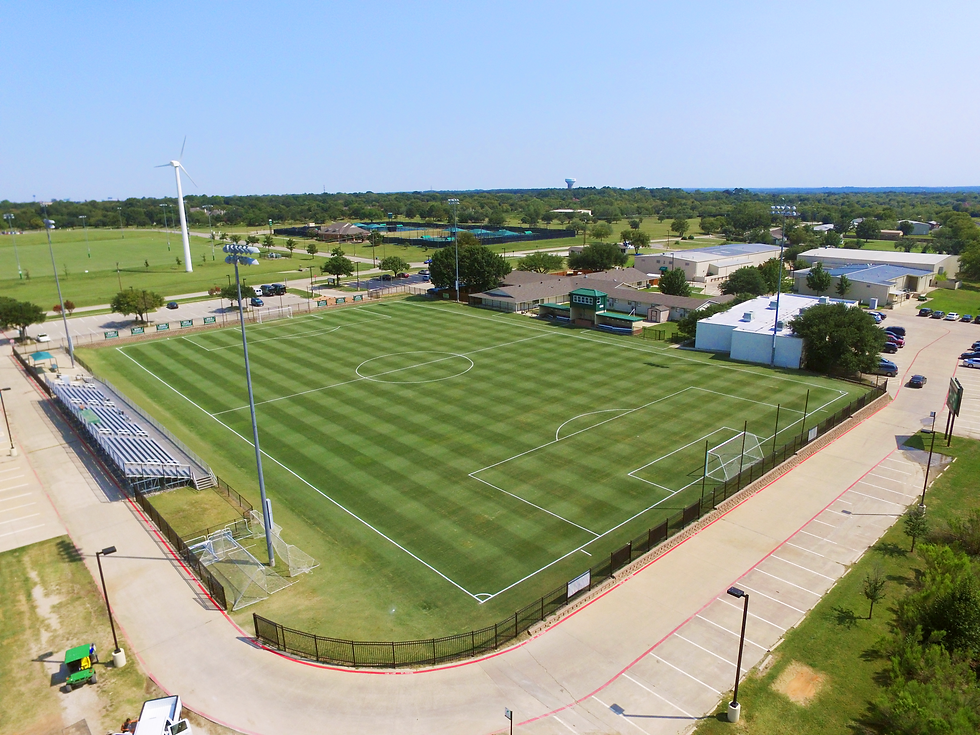Verticutting, or vertical mowing, is a cultural practice used to help reduce thatch, tighten canopy, and leaf density. Verticutters have an axle with spinning vertical blades used to cut into the grass/soil canopy. While not as popular as its cousin, horizontal, or traditional mowing, verticutting’s benefits are extensive.
All grasses grow vertically, but there are some that will grow horizontally as well. These grasses are often called stoloniferous or rhizomatous. Stolons grow just along the surface and rhizomes grow just underneath the surface. These act as fingers to help make the grass denser. The problem with density can be overcrowding. The denser your grass is, the more maintenance it requires. While growing horizontally is an evolutionary tactic by the grass to become stronger, incorporating verticutting can help control and maintain your horizontal growth.
Thatch Control
Thatch is organic material from decaying grass plants/debris. Every time your field gets mowed or played on, a good amount of cut/torn grass falls back onto the canopy, decays, and turns into organic matter. A small amount is traditionally beneficial, because it holds nutrients that are available after they decay, but they also can create a layer at the soil canopy. This layer is called thatch.
A small portion of thatch is beneficial and necessary. It acts as a cushion for the soil, which helps make fields softer and safer, but having too much can cause significant problems. Too much thatch will begin to act as a mulch, or sponge, at your surface. It will hold onto water and nutrients, preventing them from penetrating into your soil, where they are actually needed. When water is held at the surface, it can accelerate disease, cause rotting, and keep your field soft and unsafe.
When verticutting, you help thin out this thatch. You physically remove the thatch from the ground, then haul it off the field. This allows you to control the thatch and keep a beneficial amount in your field, without the negative consequences.
Increase Density
While verticutting is beneficial for any grass field, because of thatch management, increasing turf density is another benefit that’s really only achieved with horizontally growing grass, mainly Kentucky Bluegrass (rhizomatous) and Bermudagrass (stoloniferous). When a stolon or rhizome is growing horizontally and it gets sliced by the verticutter, there will be a node or internode, (essentially a new leaf or grass plant) that will grow in that space. You can see how after slicing thousands of stolons or rhizomes, you can increase your density substantially after a few verticuttings.
By removing thatch you also help create a space where these new leaves/plants can grow. If you had thatch blocking and clogging the space, the nodes would have a difficult time growing. It’s a win-win when verticutting. You get to clear out old, dead plants and make room for new young life. This process is also complimented with a top dressing. After you remove the thatch and have nodes to grow new plants, filling those areas with sand/soil can help control the thatch and give your new grass a good soil medium to grow in.
Depth and Frequency
A couple of things to keep in mind when you are scheduling your verticutting is how the depth and frequency are going to affect the field and process. The deeper you go, the more you can clean out and the more stolons/rhizomes you will cut. While this is true, the damage to the field, the amount of debris you will have to haul off of the field, and how slow you have to go when going deeper, all make this process take longer. If you only have a few days of downtime, then you may not want to go as deep.
By going shallow, you will still cut stolons/rhizomes and clean out thatch, just not quite as much. If you don’t go as deep, you can verticut faster, and there’s not as much debris to clean up, but you usually do this more often. So deep and infrequent, or shallow and more frequent. If your schedule lends itself to long breaks, then deep and infrequent verticutting may be your best bet, and vice versa.
It is CRITICAL to do the best you can to remove the debris after verticutting. Since we are trying to clean out the canopy by reducing thatch, it wouldn’t make much sense to verticut and not clean up very well. So that has to account for in your planning. It can take many hours to fully clean a heavily verticut field, not to include a few more hours to actually verticut it.
The Verticutting Legacy
Unfortunately, verticutting’s legacy isn’t as well known as we would hope. A good amount of people either don’t know what it is or are nervous to do it, because they aren’t as familiar. This leads to a great culture practice not getting the use it should. While I will say I think aerating is a more beneficial task, verticutting is right behind it. I strongly recommend people try it, even in an inconspicuous area the first time, and see how verticutting can help them.
.png)
Comments